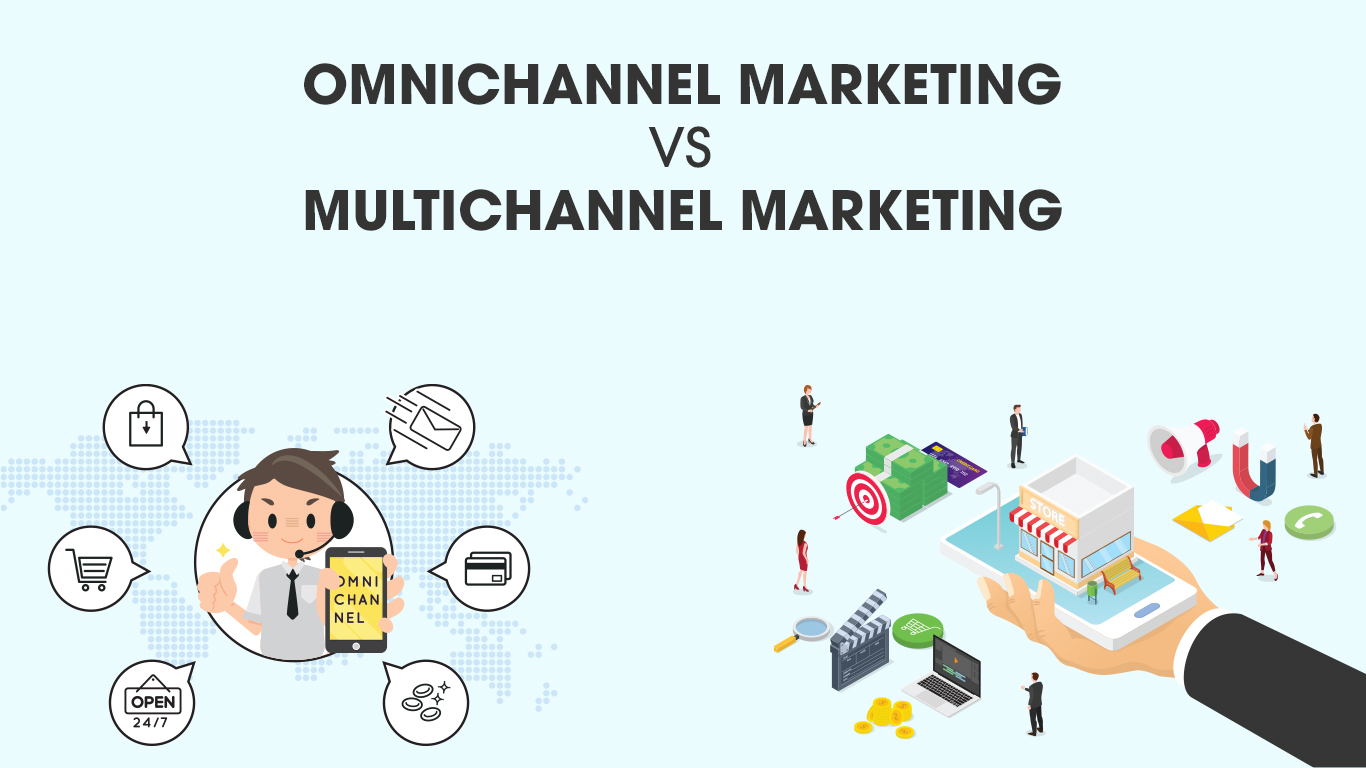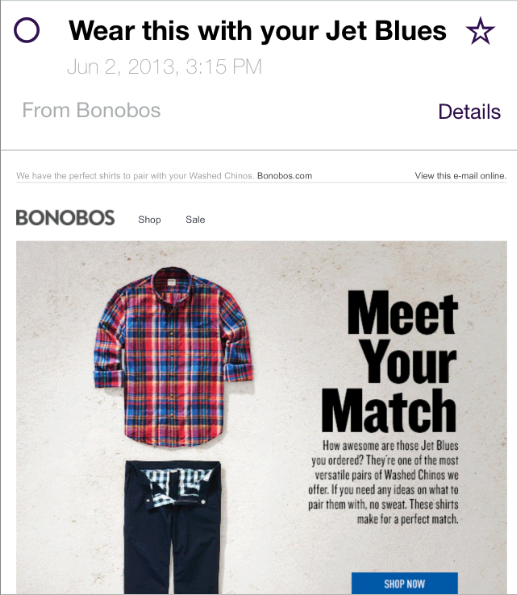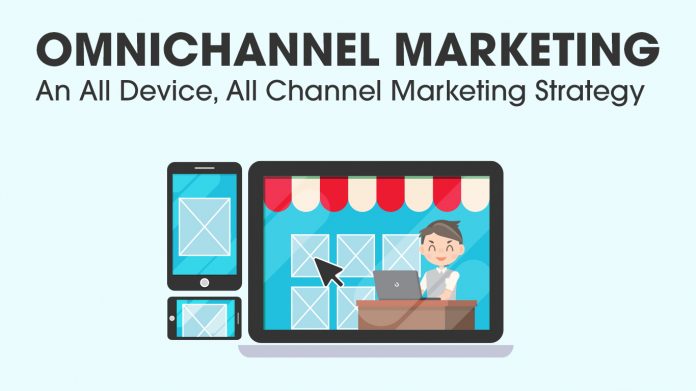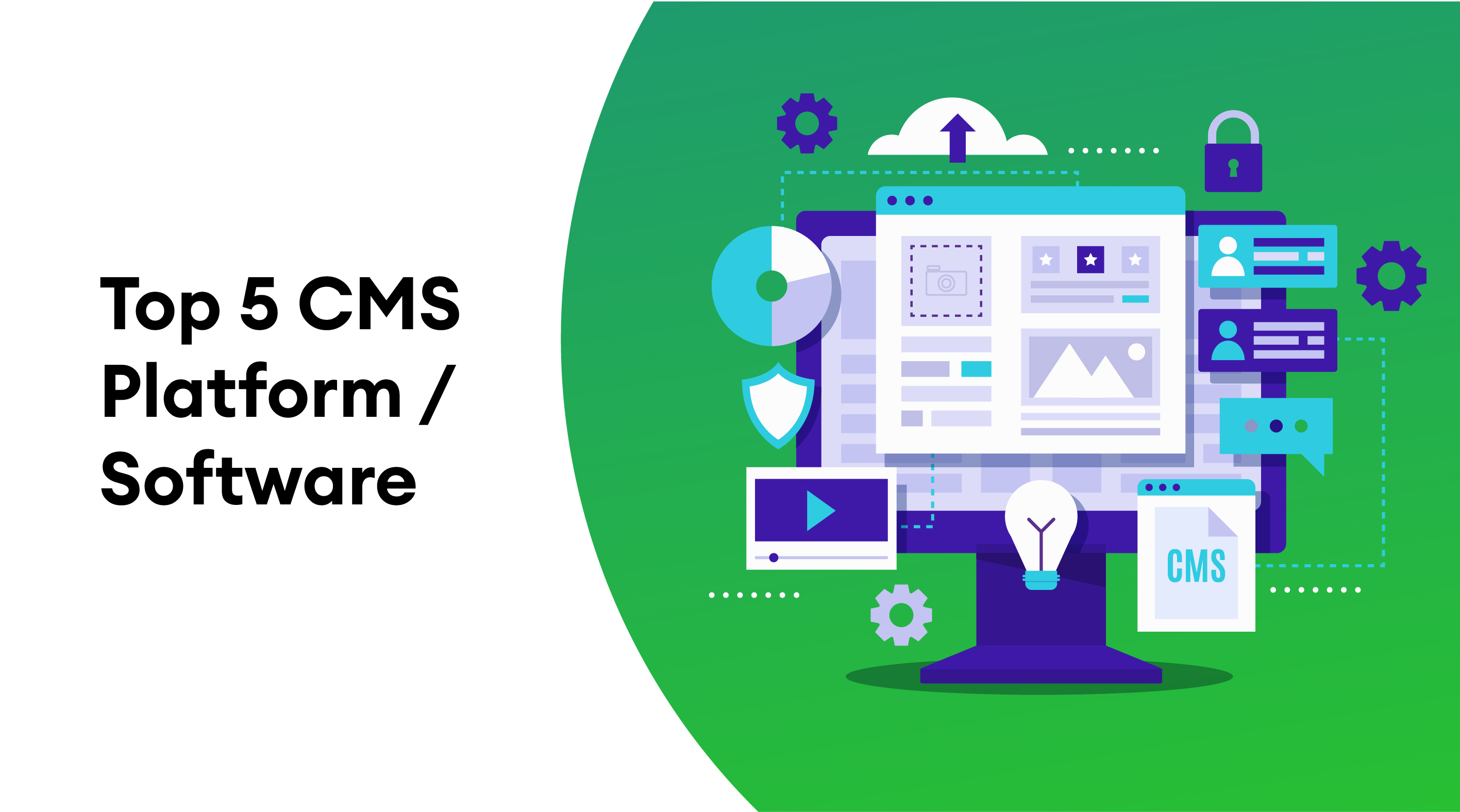Marketing, along with technology, is undergoing rapid and significant changes. Marketing is inching closer toward more personalized, one-on-one communication with customers through multiple channels and devices. Technology gets integrated into our daily lives with every advancement, and soon, the line between our activities online, and reality will begin to blur. With the changing behaviors of customers, marketers need to abandon single-channel marketing and get to a more wholesome approach — an omnichannel approach that customers use as and when they want.
Omnichannel marketing is taking over other marketing strategies and rightly so. For starters, do a basic count of the following: How many apps are on your phone? How many social media handles do you engage with? And as of right now, how many internet-connected devices are in the room with you? That’s omnichannel.
Omnichannel marketing is defined as a multi-channel sales approach taken up by brands to give their customers an integrated customer experience. This experience is provided to customers in every facet of the brand’s offerings, i.e. while shopping online, or through a telephonic call, or in a brick and mortar store. Omnichannel offers customers a seamless experience while they shop or browse through. You’ve heard the same definition for another term? Is it multi-channel marketing? Yes? Well, not so much.
Omnichannel Marketing VS Multi-Channel Marketing
While both of these marketing types look to use multiple channels, the approach is quite different for both. Despite both of these marketing methods focusing on the utilization of multiple channels, they are both distinctly different marketing strategies. Essentially, it comes down to the depth of the integration.

To better explain the unique points of omnichannel marketing, listed below are a few qualities that better explain the differences between the two.
-
Customer-Centric
Multi-channel marketing focuses on the adoption of multiple channels to get the word out on a massive scale. It is about gaining customers by casting the widest net, somewhat similar to ‘the more, the merrier.’ Companies that make use of this marketing strategy generally adopt more than two channels to communicate with and engage their customers. The channels that are most popular with brands are social media handles and email.
Omnichannel marketing, on the other hand, takes a slightly different approach and inter-relates each channel, which makes communication and engagement with customers meaningful and more tailored to their preferences. This strategy provides customers with a holistic view of the brand, its products, and services and imparts an unforgettable experience through every channel. Omnichannel marketing focuses on strengthening relations with customers and the brand.
-
Consistent
The importance that omnichannel marketing places on customer experience is the next differentiating factor between the two marketing strategies. Brands utilize omnichannel marketing to be consistent with every offering, experience, and communication through each of their channels. A consistent brand image and message increase familiarity and induce trust in each of its customers. Marketers must ensure that every department and team of the company are on board and in-sync with the kind of message they want to spread to successfully implement an omnichannel marketing strategy.
-
Eliminates Effort
To enhance customer experience, omnichannel marketing requires brands to eliminate effort from the customer experience. Omnichannel marketing requires the inter-relation of multiple channels to gather more information about their customers and put it to efficient use in whichever department it may be needed. This requires analysis of data, which pinpoints the areas where efforts exist in the customer journey, and, also, how to do away with that effort. Omnichannel marketing looks to provide customers with an effortless buying experience.
How Omnichannel Marketing Works
Multi-channel marketing requires businesses to utilize different channels to increase interactions with their customers and target audience. Here, each channel is managed and operated separately, which severely reduces, or, as in most cases, completely bars customers from traversing the various channels that a brand makes use of. Reduced communication between different departments and teams of a company, despite being possible, fails to unify their individual efforts.
Most businesses today utilize the multi-channel marketing strategy, along with Facebook ads, email marketing, content marketing, and native social selling, among others. However, these brands do not make the most of the opportunities that they have created for themselves. The data that each vertical (channel) has collected from the user, including user preferences, likes, dislikes, interests, etc., is not put to use effectively. With omnichannel marketing, brands can leverage shared data and create user experiences that are truly immersive and unique.
Softwares such as CDPs (Customer Data Platforms) facilitate the sourcing of data from multiple channels and departments. Customer data platforms are omnichannel software solutions used by businesses to collect, store, and unify data from each of their platforms and make it readily available for every department and team to access.
Why is it Important?
The need for omnichannel marketing was forecast years before. In a Harvard Business Review article from the year, 1995 titled, ‘Do You Want to Keep Your Customers Forever?’, by B. Joseph Pine II, Don Peppers, and Martha Rogers, the introductory paragraph stated the following.
“Customers, whether consumers or businesses, do not want more choices. They want exactly what they want—when, where, and how they want it—and technology now makes it possible for companies to give it to them.”
Another extract that demonstrated the importance given to customer data in the article says, “Unlike mass marketers, who buy and sell customer data willy-nilly, companies seeking to build learning relationships realize that such information is a precious asset.” This goes to show that marketers were looking to create a method in which they could collect and effectively utilize customer data to provide customers with unmatched experiences.
The Perfect Omnichannel Marketing Strategy That Boosts ROI
Well, let’s get right to it without dilly-dallying around too much. Here are a few recommendations for marketers that are looking to implement an omnichannel, multi-device strategy that boosts ROI.
-
Put Customer Experience to the Test
Brands must be aware of each aspect of a customer’s journey to effectively connect with the brand’s offerings. Marketers must test the experience via internal and external testers by placing orders, communicating on every channel, submitting a report, and more. Once results are obtained, get rid of any problems or unnecessary efforts that customers may be going through.
-
Get to Measuring
Leveraging tech updates is vital for every marketer in this technologically advanced age. To know the preferences, likes, and dislikes of customers, brands store customer data. The analysis of this data provides marketers with the information necessary to make their efforts worthwhile. Marketers must record any data about customers that are provided by them, however, without getting too invasive.
-
Audience Targeting
Marketers must find out which data points are useful for their organizations and segment their audience accordingly. These data points must be identified as useful and provide a better understanding of the brand’s customers. Marketing automation and software such as Demand Side Platforms (DSPs) can enhance data with added intelligence. An example of DSPs used to collect such information is when male and female iOS users working in the tech industry, around 30 years of age, are more likely to buy products based on their technical specifications. The collection of such rich data profiles enables marketing to specific audiences.
-
Smart Communication
Delivering messages is a way to keep customers engaged. However, just engagement is simply not enough. Brands need to focus on what message they convey, through whichever channel they utilize. The content in the message is the key. As a marketer, you may want to consider what the customer has previously bought before you send out a message, which in all likelihood will not really affect the customer much. Or in cases where customers have added another product to their carts but haven’t made the purchase yet, utilize marketing content to reference that incomplete purchase.
Here’s a brilliant example of utilizing smart communication for marketing via an omnichannel strategy implemented by Bonobos while sending emails to their customer that recommend a shirt with a previously bought pair of jeans.

Image as seen on the Website.
-
Device Usage and Response
People are in the habit of using multiple devices for a single process. Omnichannel marketing campaigns benefit tremendously from marketers being aware of the switching of devices by users. Marketers must be able to listen to and respond to these interactions effectively. In the case of a brand that deals in e-commerce, the brand must make sure that if users place a product in the cart from one device, it must be available in the cart in the other devices they use as well.
Omnichannel Examples in Practice
Now that we have the perfect mix to build an omnichannel strategy, take a look at some top brands that make use of it.
-
Banks
 Financial organizations offer multiple services such as e-banking, telebanking, and mobile banking. All of these channels are inter-related with the customer’s bank account, passbook, banking app, emails for security, and text notifications. Literally, every bank makes use of omnichannel marketing.
Financial organizations offer multiple services such as e-banking, telebanking, and mobile banking. All of these channels are inter-related with the customer’s bank account, passbook, banking app, emails for security, and text notifications. Literally, every bank makes use of omnichannel marketing.
-
Starbucks
 Starbucks tests omnichannel to its maximum. It makes use of its website, app, and other social media handles to engage and communicate with customers. The Starbucks website provides users with information regarding the various beverages, a list of ingredients, calories, store locator, nutritional information, rewards program, and a whole lot more. The app enables customers to order, pay, stream free music, and connect to free Wi-Fi, among other things. Starbucks utilizes omnichannel to modernize customer experience and is trying to cement itself as the go-to coffee place in its customer’s minds.
Starbucks tests omnichannel to its maximum. It makes use of its website, app, and other social media handles to engage and communicate with customers. The Starbucks website provides users with information regarding the various beverages, a list of ingredients, calories, store locator, nutritional information, rewards program, and a whole lot more. The app enables customers to order, pay, stream free music, and connect to free Wi-Fi, among other things. Starbucks utilizes omnichannel to modernize customer experience and is trying to cement itself as the go-to coffee place in its customer’s minds.
Image as seen on the Website.
-
Kenzo

To take a more international approach to omnichannel, Kenzo recognizes and acknowledges customers across various countries. This portrays that the brand values the customer for their loyalty. This enhances the overall experience of shopping with a brand as it provides recognition, especially when the customer has spent a considerable amount of money purchasing products from one particular brand. It is imperative for brands that the orders of their existing customers be recognized and counted as loyalty.
Image as seen on the Website.
Omnichannel Marketing Best Practices

The best of omnichannel marketing strategies are based on the logic that customers engage with brands in different ways across multiple platforms and channels, and are provided with consistent user experiences each time. Here are some omnichannel marketing best practices.
- Adopt new tech that is optimized not just for mobiles, but every device that a customer can make use of
- Develop individualistic omnichannel infrastructure with data from all departments
- Take into account any platform and device that customers can use to interact with the brand
- Deliver a highly integrated experience to align messaging, objectives and goals across all devices and platforms
- Test VR (Virtual Reality) marketing for a truly unforgettable customer experience
- Measure and test customer journeys repetitively
- The segment target audience for more personalization
- Listen and respond to customers via their preferred channels and devices
- Personalize experience and provide an effortless customer experience
Benefits of Omnichannel Marketing
The benefits of Omnichannel marketing are as follows.
-
Lower Customer Attrition Rates
Omnichannel marketing can be used to effectively bring down attrition rates by sending personalized recommendations with suitable products or services, keeping the customer’s preferences in mind. Essentially, marketers need to link their CRM software to their account, and each time the purchase frequency of a user lowers, it will automatically trigger marketing automation and send across a personalized recommendation email, thus reducing customer churn.
-
Effortless Customer Journey
Marketers need to have a keen focus on the drop-out points in customer journeys. They need to spot places where customers abandon carts most frequently. This may be due to a number of reasons, such as the checkout procedure involving a step too many, maybe a hidden fee that adds up later on, or that the user doesn’t trust the website enough, just by the interface, to enter their card details, or even a limitation of payment options made available to users.
Spotting and fixing these issues are possible with omnichannel as it enables the automatic sending of abandonment emails. A large number of these emails from one spot on the website means something isn’t right and needs to be fixed.
-
Data Analytics for Specific Targeting
Marketers have the option of leveraging predictive analytics to analyze past customer behaviors on the brand’s website. This should be used to identify users that have spent more than 30 minutes on the brand’s website, or those that have visited the website more than two times in a month before purchasing. These stats portray customer interest and are micro-segments of the target audience. Brands would benefit from picking the ones that are of most interest to them and asking their resources (sales representatives) to spend more time on these leads.
Does Omnichannel Marketing Give You Your Money’s Worth?
After going through this entire article, many may still be pondering upon whether or not omnichannel is worth the hassle. In such cases, it’s simply better to let the numbers do the talking. Have a look at these statistics for yourself.
- Brands adopting the omnichannel strategy achieve 91% greater year-over-year customer retention rates when compared to businesses that do not. (Aspect Software)
- The percentage of Americans switching multiple devices in a day is 98%. (Google Research)
- 87% of customers share the opinion that brands need to provide a seamless experience by putting in more effort. (Zendesk)
- An average of 89% of customer engagement is retained by brands that have strong, effective omnichannel strategies, compared to 33% in the case of brands that do not possess omnichannel strategies as strong. (Aberdeen Group)
- In terms of customer service, customers expect real-time assistance, regardless of the channel utilized. (Zendesk)
- While interacting with customer service, 61% of customers have found switching from one channel to another difficult. (Aspect)
- The need for near-perfect execution will amplify the demand for omnichannel customer experience by 2020. (PricewaterhouseCoopers)
- 55% of brands do not have a cross-channel strategy. (The CMO Club)
- Consistent interactions are expected by 90% of customers across channels. (SDL)
- Omnichannel shoppers are studied to have a 30% higher lifetime value for the brand than those that shop via a single channel. (Google)
Despite having a multi-channel marketing strategy being the norm, well, that’s all it is, another brand using the same strategy as so many others. What will make your business stand out from others is omnichannel marketing, a strategy that enables fluid coworking between all those channels.
Final Word
It’s the only approach big players such as Amazon make use of, and it’s available to everyone, whenever ready. By making themselves omnipresent on channels that customers are comfortable with, brands can create an omnichannel experience that provides customers with a level of service that sets them apart from others.
If your business already utilizes a multi-channel marketing strategy, but you feel the need for each channel to work together to create better customer experiences, omnichannel is your go-to marketing strategy. While the difference between the two strategies is small, understanding what they actually mean can work wonders for your business. There’s also the added advantage of the strategy involving no risk as companies that focus on omnichannel save money while generating greater revenues. Some may find it intrusive, but omnichannel marketing is a win-win for brands and the future of commerce.







